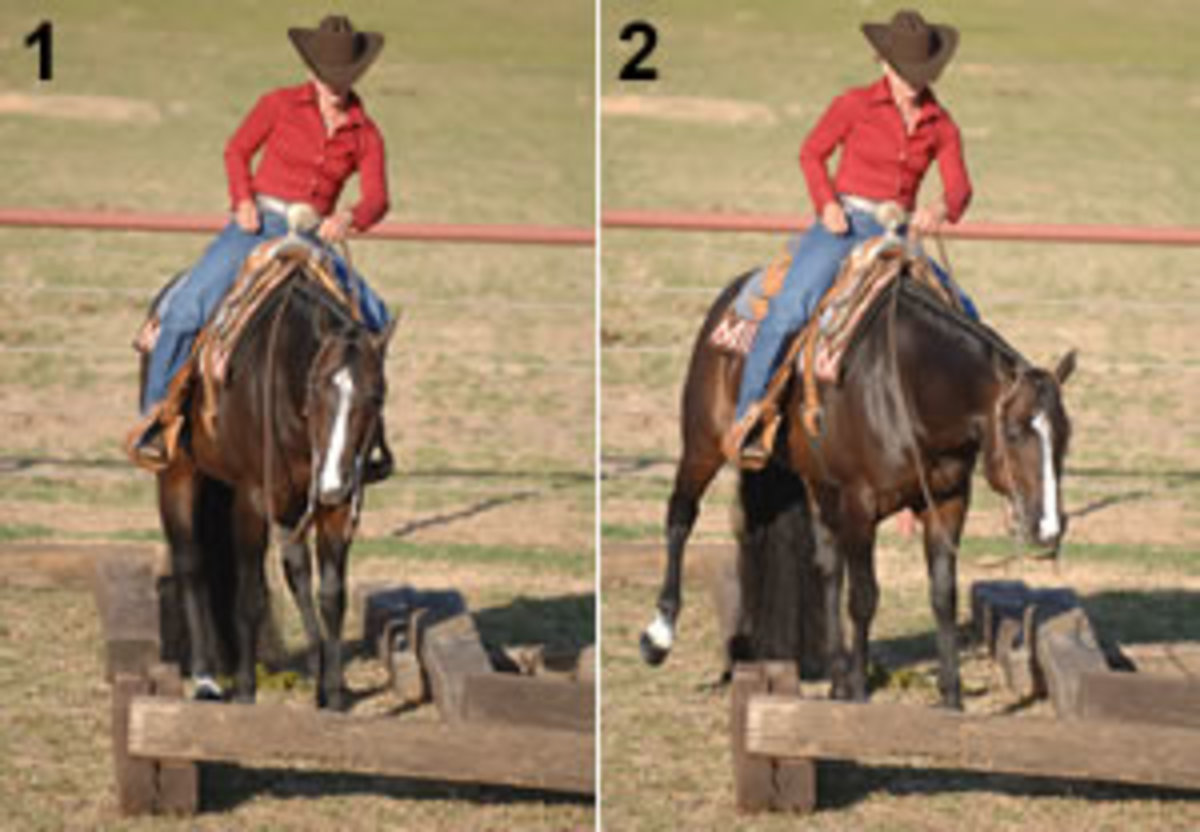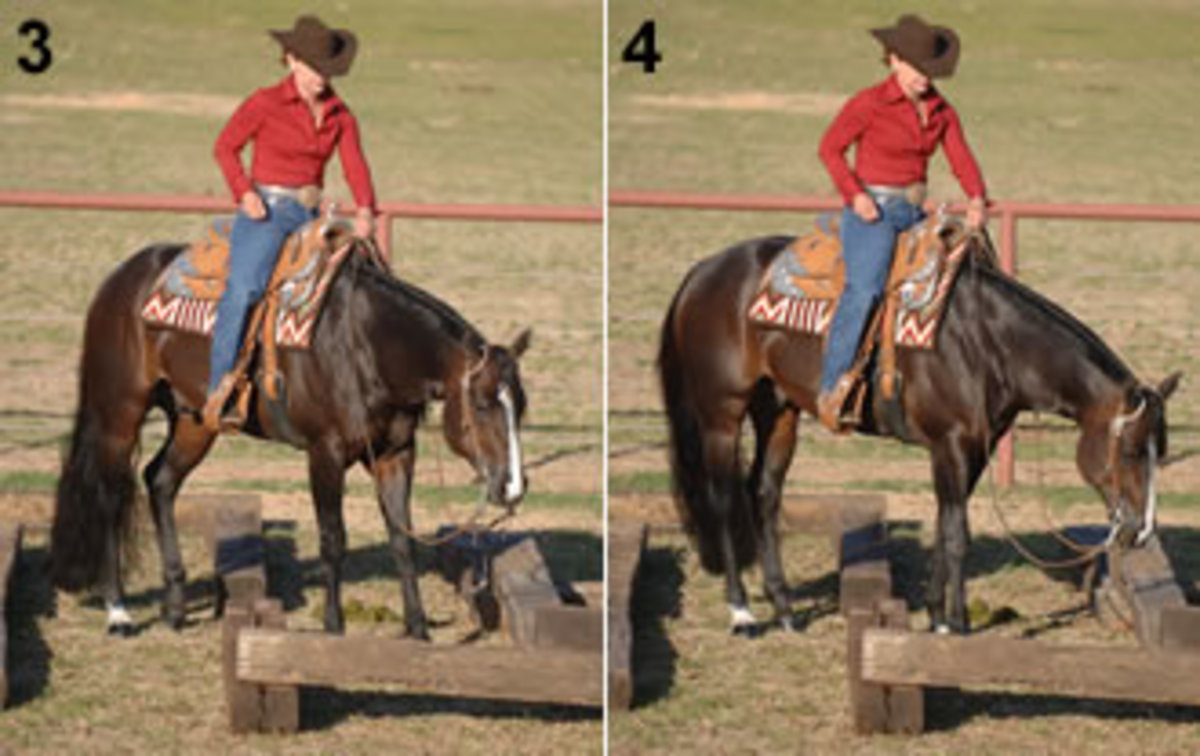Here, I’ll show you how to back your horse laterally out of a space defined by railroad ties (or ground poles, if you don’t have ties). This exercise will make your horse more responsive moving off your leg, which enhances his overall maneuverability. This will pay dividends in the show pen and down the trail.
I’ll show you how to back laterally and to your right; to ride the same exercise to your left, simply reverse all cues.
Work deliberately on this exercise, one step at a time, to give your horse time to understand what you’re asking and respond to your cues. This work is ideal for a thin-skinned and/or light-sided horse, as the railroad ties (or ground poles) demand a certain amount of his attention while they contain his movement. He therefore learns to accept your leg without getting rushy.
For this exercise, you’ll need:
Enough railroad ties or ground poles to create a channel that’s about 12 feet long and 3 or 4 feet wide, with a 3- or 4-foot opening on one side of it. (The channel shown in these pictures is part of an “L” maze.)
1. After warming your horse up lightly, walk him into the channel defined by the railroad ties, positioning him as my horse is here, so that his hind legs are across from the channel’s side opening. Then ask him to begin to move his hind end back and to his right. Do this by weighting your left seat bone; applying pressure with your left leg just behind the cinch; “opening the door” to movement by taking your right leg away from his side; and picking up your reins just enough to indicate that he’s to move back, not forward.

2. Continue with these same cues as your horse begins to step sideways and backwards, through the opening. Encourage him to work deliberately, one step at a time, to be accurate in his movement. You don’t want him to knock the ties!
3. As my horse continues to respond to my leg, seat and hand, I remain quiet in the saddle, concentrating on using the lightest, yet clearest cues possible in order to get the response I need. Obstacle work, because it demands precision, is excellent for developing this sort of concentration.

4. My horse has successfully navigated his hind end out through the opening. At this point, I like to ask my horse to step back into the channel, using my right leg and seat bone to move his hind end to his left to achieve this. Then I’ll move him back out again, and go back and forth this way, asking him to wait for my cues and developing a soft, fluid responsiveness to my legs.
Remember to work this obstacle starting in the other direction too. To do so, position your horse in the channel so that his head is facing the opposite way, and use your right leg and seat bone to encourage him to step to his left out the opening as he backs.
Suzy Jeane, an AQHA and National Snaffle Bit Association judge, operates Down The Rail Performance Prospects, a breeding and training facility in Valley View, Texas, with her husband, Joe. Suzy is also Texas A&M Equestrian’s horsemanship coach.






